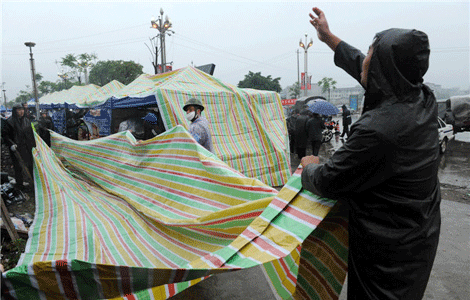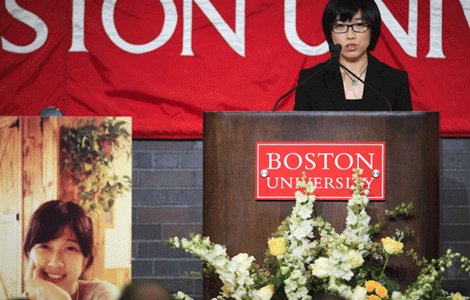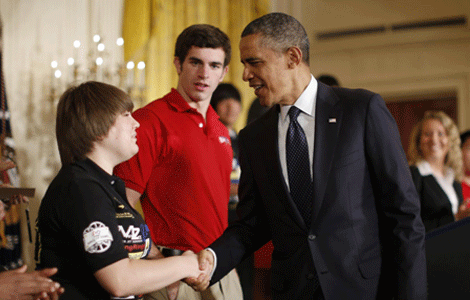Rocket designer expects more int'l cooperation
Updated: 2012-06-17 15:18
(Xinhua)
|
||||||||
BEIJING - A senior Chinese designer involved in preparations for Saturday's successful launch of Shenzhou-9, the country's fourth manned spaceship, has told Xinhua he expects more international input in future space missions.
"International cooperation will be a trend for future space exploration," said Lu Xinguang, a leading designer of the control system of the upgraded Long March-2F rocket that carried Shenzhou-9 as it blasted off from the Jiuquan Satellite Launch Center in northwest China at 6:37 p.m.
"The trend will be inevitable. International space standards will be set up for future dockings at international space stations," he added.
Various countries have distinct strengths in different fields of space technology, a fact which would make integrating resources through cooperation beneficial, according to Lu.
"In many fields, Western countries are better than us. But we are already able to send human beings to space independently, which shows that our technologies have reached a higher level. We do have our strong points," he explained.
Lu, 34, worked on Shenzhou-3 before his graduation from college and officially joined the Shenzhou-4 project in 2003. He became a major designer to create the control system of the Long March carrier rockets in 2010.
According to the scientist, "It is impossible to get access to others' technologies currently, but with the development of China's technologies, other countries will gradually open. They will choose to cooperate with us when China has enough abilities."
The technological disparity between China and advanced countries like the Untied States is narrowing fast, in his view: "The speed of development grows increasingly fast, which means some gaps might have needed 50 years to close in the past, but only 10 years in the future."
An example of this pace can be seen in comparing the technical leaps forward that China needed to make in launching the unmanned Shenzhou-8 spacecraft and orbiting space lab module Tiangong-1, and now Shenzhou-9.
The former required a big improvement in the Long March carrier rocket used, but the latter only slight improvement. "The rocket already met the needs of manned space flight," Lu noted.
For the young rocket pioneer, the goal of furthering space exploration is to learn more about the unknown. "We live on Earth, which is indeed in space. Our planet is such a tiny thing, and we are tiny living things on the tiny planet. We can fly away from the planet for only a small distance right now," he said.
"Space is that boundless and what we know is too limited," he said.

 Relief reaches isolated village
Relief reaches isolated village
 Rainfall poses new threats to quake-hit region
Rainfall poses new threats to quake-hit region
 Funerals begin for Boston bombing victims
Funerals begin for Boston bombing victims
 Quake takeaway from China's Air Force
Quake takeaway from China's Air Force
 Obama celebrates young inventors at science fair
Obama celebrates young inventors at science fair
 Earth Day marked around the world
Earth Day marked around the world
 Volunteer team helping students find sense of normalcy
Volunteer team helping students find sense of normalcy
 Ethnic groups quick to join rescue efforts
Ethnic groups quick to join rescue efforts
Most Viewed
Editor's Picks

|

|

|

|

|

|
Today's Top News
Health new priority for quake zone
Xi meets US top military officer
Japan's boats driven out of Diaoyu
China mulls online shopping legislation
Bird flu death toll rises to 22
Putin appoints new ambassador to China
Japanese ships blocked from Diaoyu Islands
Inspired by Guan, more Chinese pick up golf
US Weekly

|

|







